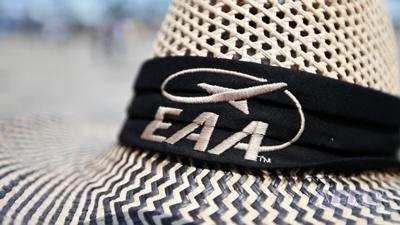New Proposal Allows More Control By Individual Pilots And Their AMEs
More than a year of work focusing on the FAA’s sleep apnea policy has brought considerable revisions to the agency’s original draft that would have forced costly sleep studies on pilots even if they had shown no symptoms of the disorder.

The FAA late last week released of its latest proposed draft policy for sleep apnea, which has long been a disqualifying condition for airmen medical certificates. The latest draft has significant improvements over the initial policy announced in November 2013, which sparked immediate opposition by EAA and other aviation organizations. EAA’s Aeromedical Advisory Council consisting of experienced medical examiners had criticized the proposal, and the U.S. House of Representatives even introduced legislation supported by EAA, AOPA and other groups that would have required such a policy to submit to a full rulemaking process.
“The FAA’s new policy, as proposed, will not require a sleep study unless a pilot reports symptoms specifically associated with sleep apnea to their aviation medical examiner,” said Sean Elliott, EAA’s vice president of advocacy and safety. “We are still studying all the details of this proposed policy, but it is an improvement on the agency’s initial proposal more than a year ago that was quite overreaching, mandating additional tests based on Body Mass Index and other indicators even if no symptoms had been present. We found that very intrusive and draconian. EAA felt it was very important to get back to common-sense guidelines that can be primarily addressed between pilots and their local aviation medical examiners.”

Likewise, the NBAA said that the new guidance now reflects a practical approach from the Association and other general aviation (GA) groups for addressing the condition, without compromising flight safety.
“This new guidance, developed with NBAA’s input, reflects a pivot for the agency, which combines common sense with clinical discipline,” said NBAA President and CEO Ed Bolen. Particularly noteworthy for Bolen is that, under the new guidance, pilots will be able to continue to fly while being evaluated for OSA.
Other changes in the new policy, scheduled to be announced by the FAA in the near future, include:
- No longer requiring a sleep study solely because a pilot has a Body Mass Index (BMI) over 40, unless sleep apnea-associated symptoms are reported.
- Pilots requiring additional screening for sleep apnea will still be issued a medical certificate at the time of the exam if no other disqualifying factors are present. A pilot will then have three months to have the screening completed, during which time they may continue to fly.
- If a sleep evaluation does not indicate sleep apnea, no further action would be required.
- Pilots who are diagnosed with sleep apnea following evaluation could then send documentation of effective treatment to the FAA Aerospace Medicine Certification Division or the FAA Regional Flight Surgeon to receive a special issuance medical certificate to replace a previously issued regular medical certificate.
The new policy also eliminates the initial plan by the FAA to eventually extend required sleep evaluation to those with a BMI of at least 30. That provision was among the most-opposed by EAA, as it was predictive medicine without evidence of safety benefit that would be extremely costly for pilots, even those without symptoms.
“We appreciate the FAA’s willingness to move forward toward a more realistic policy for addressing and treating this disorder within the aviation community,” Elliott added. “It’s also important for individual pilots to be forthcoming with their personal AMEs if they do have sleep apnea symptoms, for their personal safety and that of their passengers. This is not simply because it’s required within the regulations. As EAA continues to push for medical certificate reform, we are telling regulators, the Administration, and Congress that pilots are responsible when self-certifying their fitness prior to every flight. Reporting and addressing disqualifying conditions by those who have them are essential to our overall goal of wider freedoms for pilot medical certification.”
 ANN's Daily Aero-Term (04.26.24): DETRESFA (Distress Phrase)
ANN's Daily Aero-Term (04.26.24): DETRESFA (Distress Phrase) ANN's Daily Aero-Linx (04.26.24)
ANN's Daily Aero-Linx (04.26.24) Airborne 04.22.24: Rotor X Worsens, Airport Fees 4 FNB?, USMC Drone Pilot
Airborne 04.22.24: Rotor X Worsens, Airport Fees 4 FNB?, USMC Drone Pilot Airborne 04.24.24: INTEGRAL E, Elixir USA, M700 RVSM
Airborne 04.24.24: INTEGRAL E, Elixir USA, M700 RVSM Airborne-NextGen 04.23.24: UAVOS UVH 170, magni650 Engine, World eVTOL Directory
Airborne-NextGen 04.23.24: UAVOS UVH 170, magni650 Engine, World eVTOL Directory




